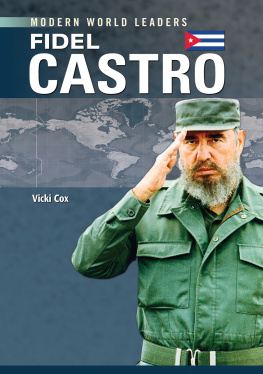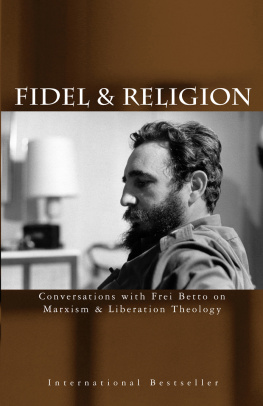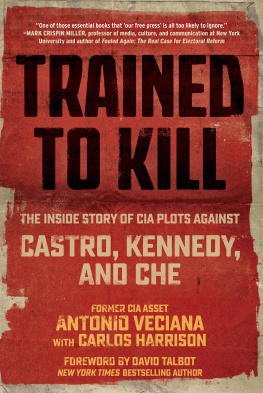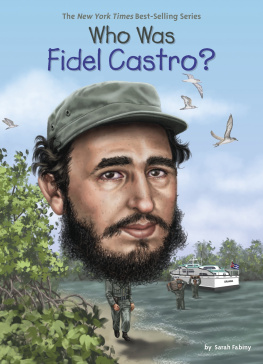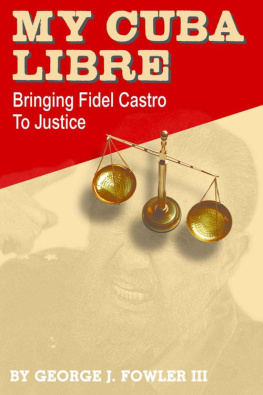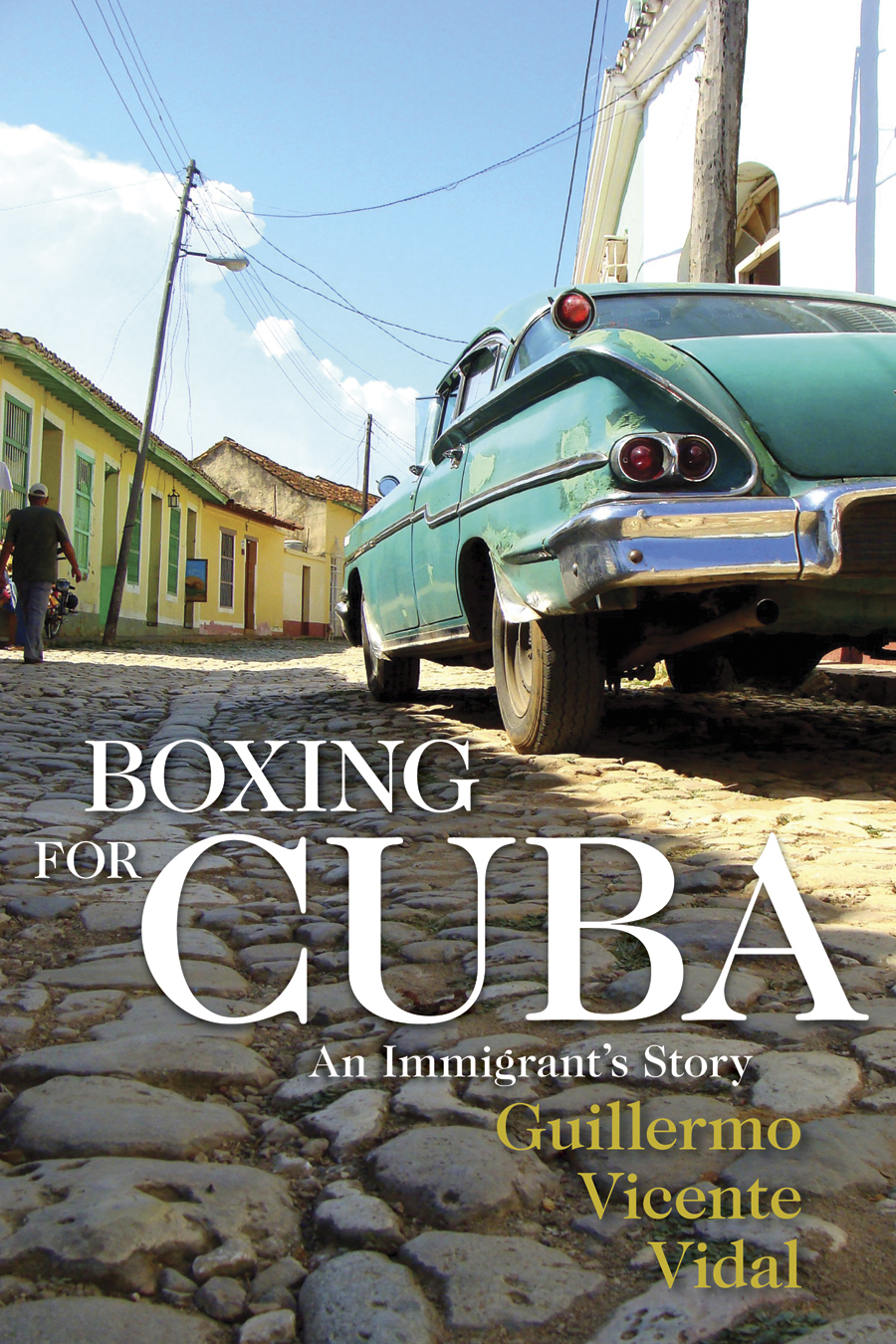Text and photos 2007, 2013 Guillermo Vicente Vidal
First published by Ghost Road Press, 2007
The material in this book is written to the best of the authors recollection.
All rights reserved. No part of this book may be reproduced or transmitted in any form or by any means, electronic or mechanical, including photocopying, recording, or by an information storage and retrieval systemexcept by a reviewer who may quote brief passages in a reviewwithout permission in writing from the publisher.
Library of Congress Cataloging-in-Publication Data
Vidal, Guillermo Vincente.
Boxing for Cuba : an immigrants story / Guillermo Vicente Vidal. -- 2nd edition.
pages cm
ISBN 978-1-55591-910-8
1. Vidal, Guillermo Vincente. 2. Cuban Americans--Biography. 3. Exiles--United States--Biography. 4. Immigrants--United States--Biography. 5. Cuba--Biography. 6. Denver (Colo.)--Biography. I. Title.
E184.C97V53 2013
973.046872--dc23
2013003411
Printed in the United States of America
0 9 8 7 6 5 4 3 2 1
Design by Jack Lenzo
Fulcrum Publishing
4690 Table Mountain Dr., Ste. 100
Golden, CO 80403
800-992-2908 303-277-1623
www.fulcrumbooks.com
A mis padres, Roberto y Marta Vidal, que sacrificaron todo; a mis hermanos, Roberto y Juan Vidal, que me ayudaron a sobrevivir
To my parents, Roberto and Marta Vidal, who sacrificed everything; to my brothers, Roberto and Juan Vidal, who helped me survive
Contents
Uno
The Center of the Universe
Our house in Camagey was named for a bar of soap. La Villita Candado, it was called, and Candado was a popular bath soap in the years before Fidel and his fierce compaeros swept down out of the Sierra Maestra and wholly changed our lives. The house had been a wedding gift to my parents from my paternal grandfather, who purchased it sometime in the 1940s from the family who had won it in a contest of sorts. As an advertising scheme, the soap company had built several modest villitas in cities across Cuba, announcing that a corresponding number of tokens allowing the bearer to claim one of the houses had been buried in bars of Candado . Sales of Candado soared; the tokens ultimately emerged from a few precious bars, and each of the houses retained minor renown for many years afterward in a nation where, for many people, owning a home was only a dream.
In my familys case, it wasnt our luck but our larger familys prosperity that had allowed us to make La Villita Candado our home. Good fortune, in fact, seemed to abandon us entirely beginning at a time when I was eight years old. And our prosperitysuch as it waswas the thing that ultimately labeled us enemies of the people, set our small world on its end, and profoundly altered the life I otherwise might have lived.

In my earliest years in Cuba, however, I was buoyed by the absolute certainty that the city of Camageythe third largest in my countrylay at the lush center of the universe. Our home was situated on Carretera Central, the busiest street in town, and the house and its ample garden were surrounded by a stucco and wrought-iron fence that made our home feel like a grand fortress to my two brothers and me. Despite our seasoned tree-climbing skills, we couldnt scale the high fence, yet we didnt mind. The fence simply seemed to define the boundaries of an amusement park that was exclusively ours, the twinsRoberto and Juan, whom we called Kiko and Totoand I enchanted each day by the rainbow-striped lizards that raced to escape our grasps and the slippery tadpoles that swam in the huge earthenware pot called a tinajon , which captured rainwater from the roof. We built exotic cities for ourselves among the jungle of fruit trees and shrubs and vines, played cowboys and Indians, embarked on daring safaris, and fought great battles against injustice of every kind. We endlessly climbed the great mango treeits highest branches, even back then, visible throughout the neighborhoodknocking its wonderful fruit to the ground with our fists, rocks, and sticks.
We marveled at our friend Marcelo, the gardener, a young campesino in his twenties already missing his front teeth. Like so many people from the country, Marcelo seemed to find a way to add the word chico , kid, to almost every sentence he spoke, and his accent was thick enough that sometimes we simply guessed at what he was saying. Yet he was lithe and strong and adeptthe kind of young man boys like us couldnt help but be fascinated byand the fact that he used his machete to cut the lawn rather than the mower my father provided was proof to the three of us that he was a man of exceptional skills.
It may have been true throughout Cuba in those prerevolution years, but in our case at least, Marcelo and the others who worked for Mami and Papi were woven tightly into the broad fabric of our family. We all were related somehow, if only by our daily proximity to each other and the fact that all of usboys and servants alikedepended for our survival on my fathers business acumen and my mothers complex kinds of acceptance. Our nannies, Romelia and her daughter-in-law Emilita; Gladis the cook; Ismaela, Felix, and El Negrito Juanthe three of them having worked for my grandparents since Mami herself was a childwere people with whom I shared both love and relation, despite the fact that, in the case of Gladis and El Negrito Juan, it was a kinship plainly complicated by color.
Like the United States, Cuba had been stricken by the blight of racism since the earliest days of the slave trade, and because Gladis was black, none of us considered it unacceptable that she was confined to the kitchen and virtually never ventured into other parts of the house. Her coal-skinned boyfriend wasnt allowed to enter the house at all, and I remember him often waiting patiently for her to come out the back door and join him for a bit, the two of them stealing kisses until the teasing my brothers and I made them sufferas well perhaps as the demands of our dinnerwould send him off to another Cuba, one the three of us knew nothing about. El Negrito Juan, who lived in a tiny room at the back of my grandfathers medical clinic, would seldom venture farther than our front porch. He was a kind and gentle man who had been devoted to my mother since she was a small child, and the two of them shared an important bond, one that somehow cut through the prejudices and terrible affronts of that era.

My mother was still a small girl when people began to comment about her extraordinary beauty. Marta Teresa Ramos Almendros, they would insist, surely would grow up to be the most beautiful woman in Camagey, and their predictions proved correct. But Mamis charm, her social graces, her familys wealth and position, and her beautythe attributes that had drawn my father to hermasked a deep insecurity and a strangely incurable loneliness, the products of wounds she had begun to suffer early in life.
She was born in 1924 to Juan Ramos Garcia, a well-respected Camagey physician, and Rufina Almendros Boza, herself a storied beauty from one of the citys wealthiest families. My grandfather owned a large home near the city center, one that housed his medical clinic as well, and my grandmother decorated the house with furniture, paintings, and statues she imported from Europe. Dr. Ramos and his young wife wanted for nothing; they led a charmed life, and they lavished attention on their two children, no doubt in part because my grandfather had lost his own mother when he was just five, was raised by an aunt when his father no longer would do so once his wife was dead, and struggled to achieve success, working his way through medical school, then serving as an army doctor for many years before he married Rufina and opened his private practice.


